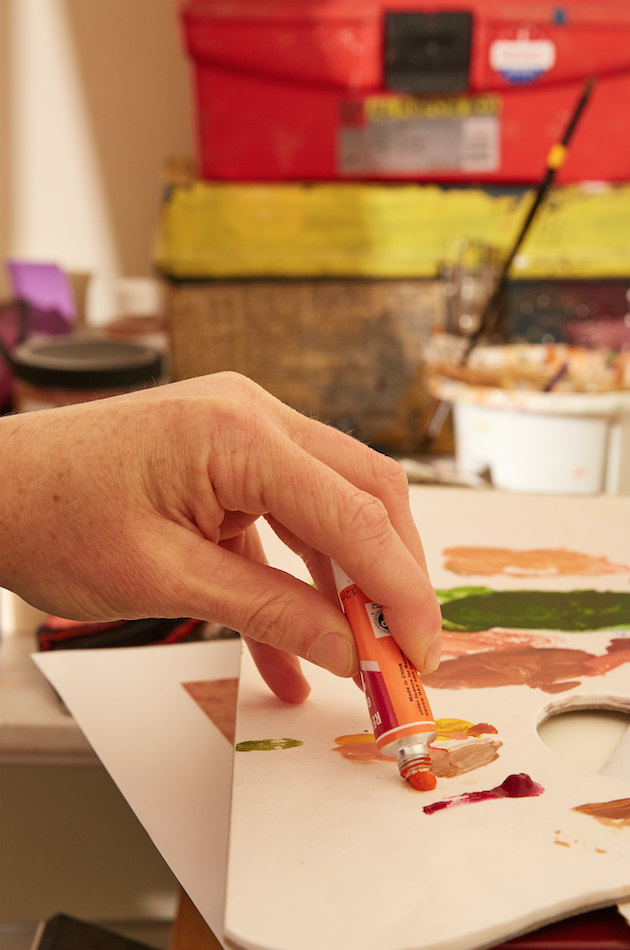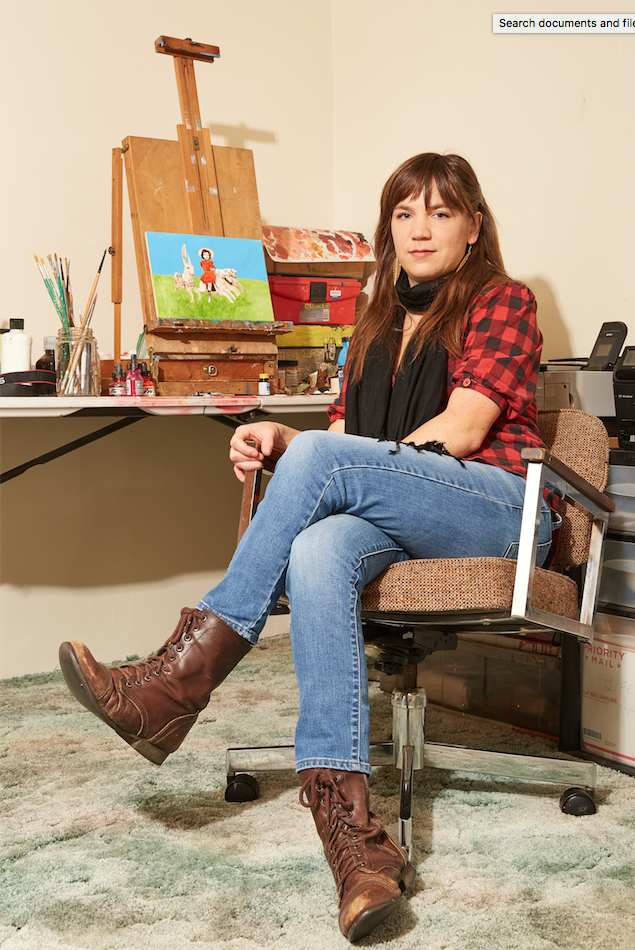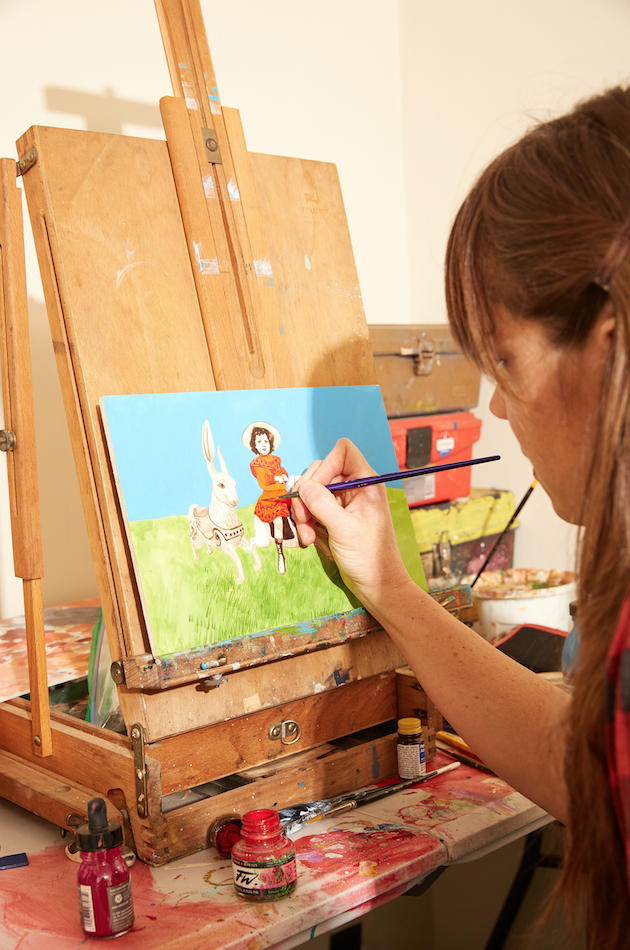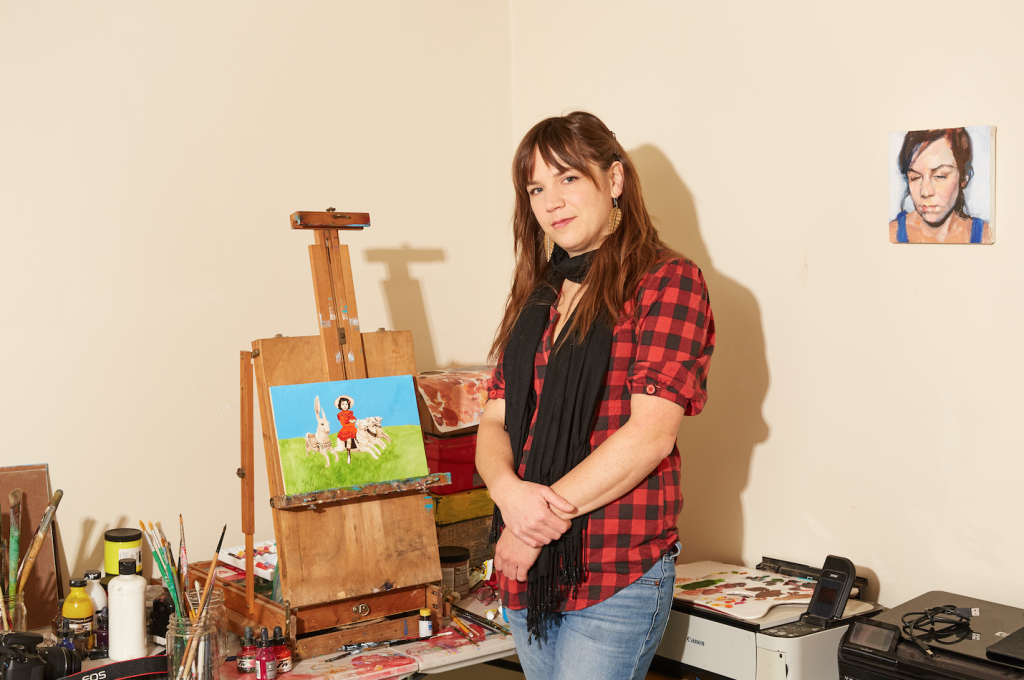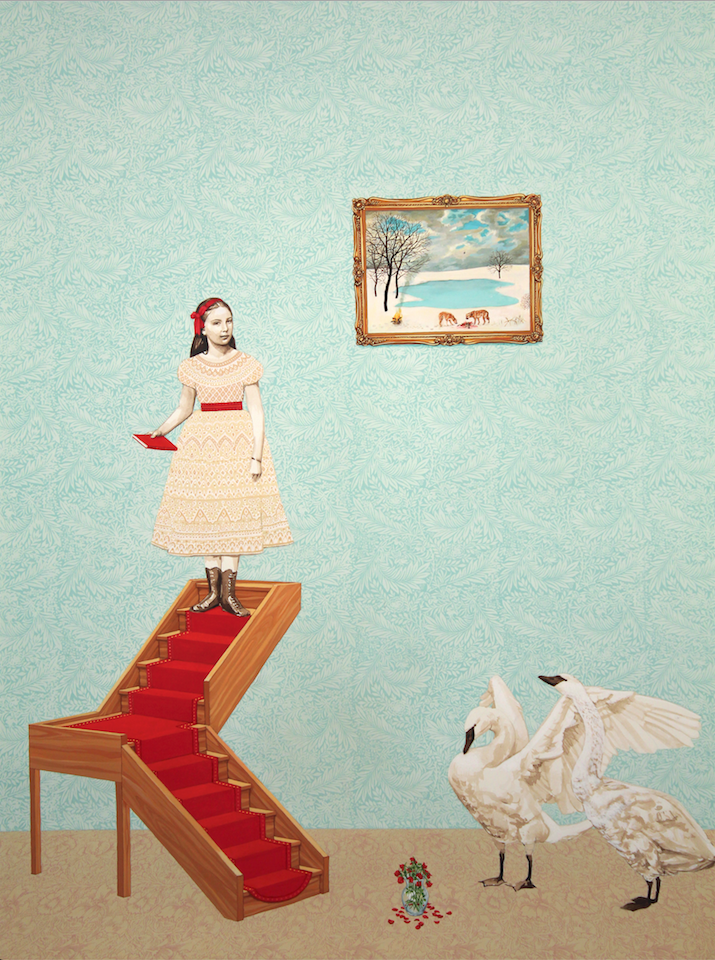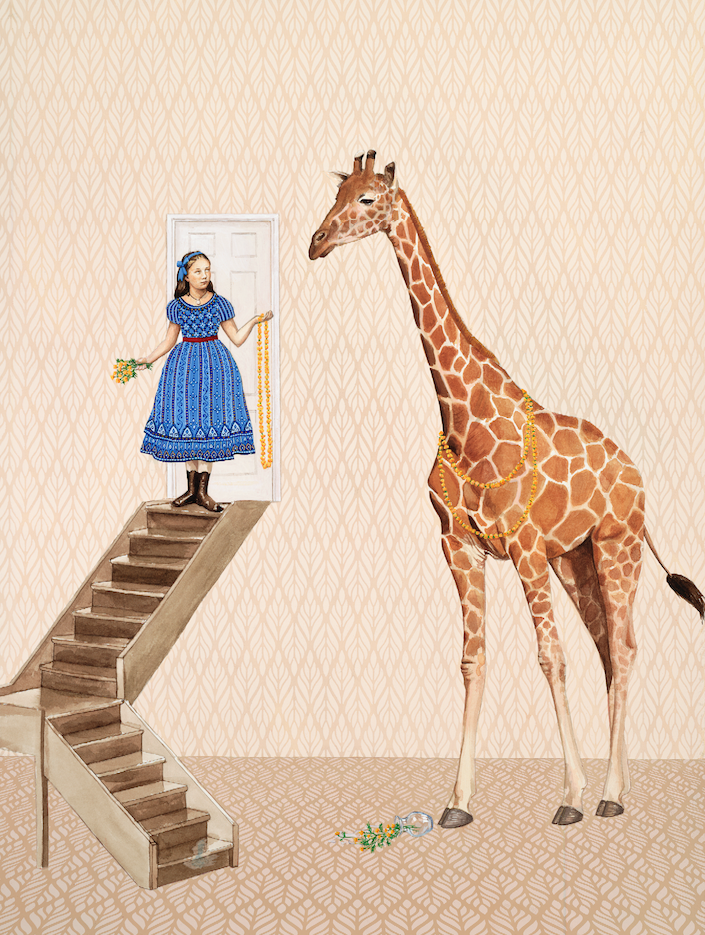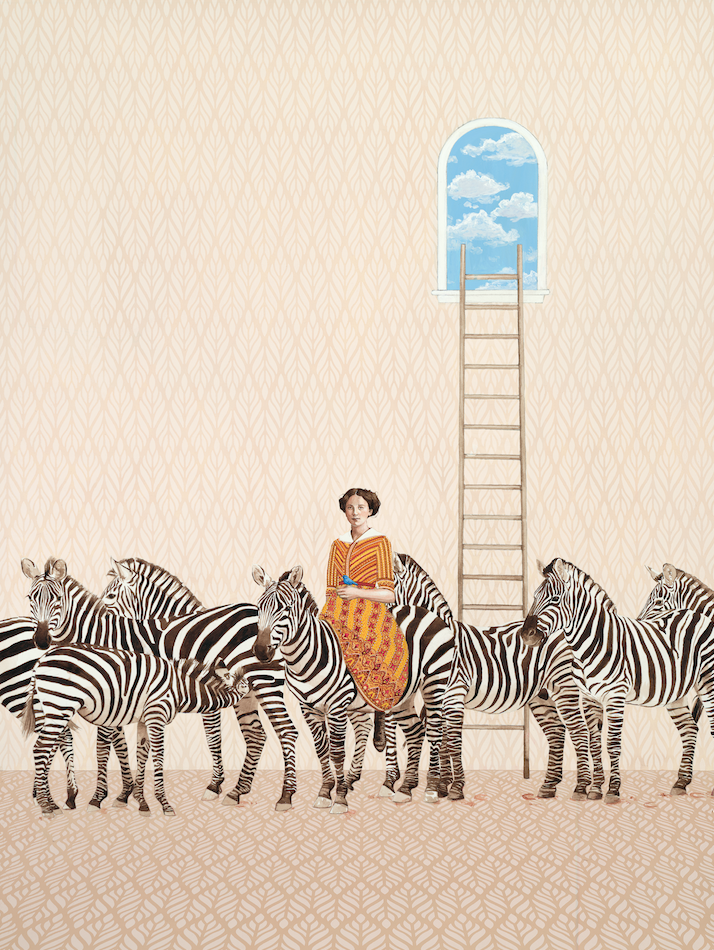Gallery Space: Kyla Rafert
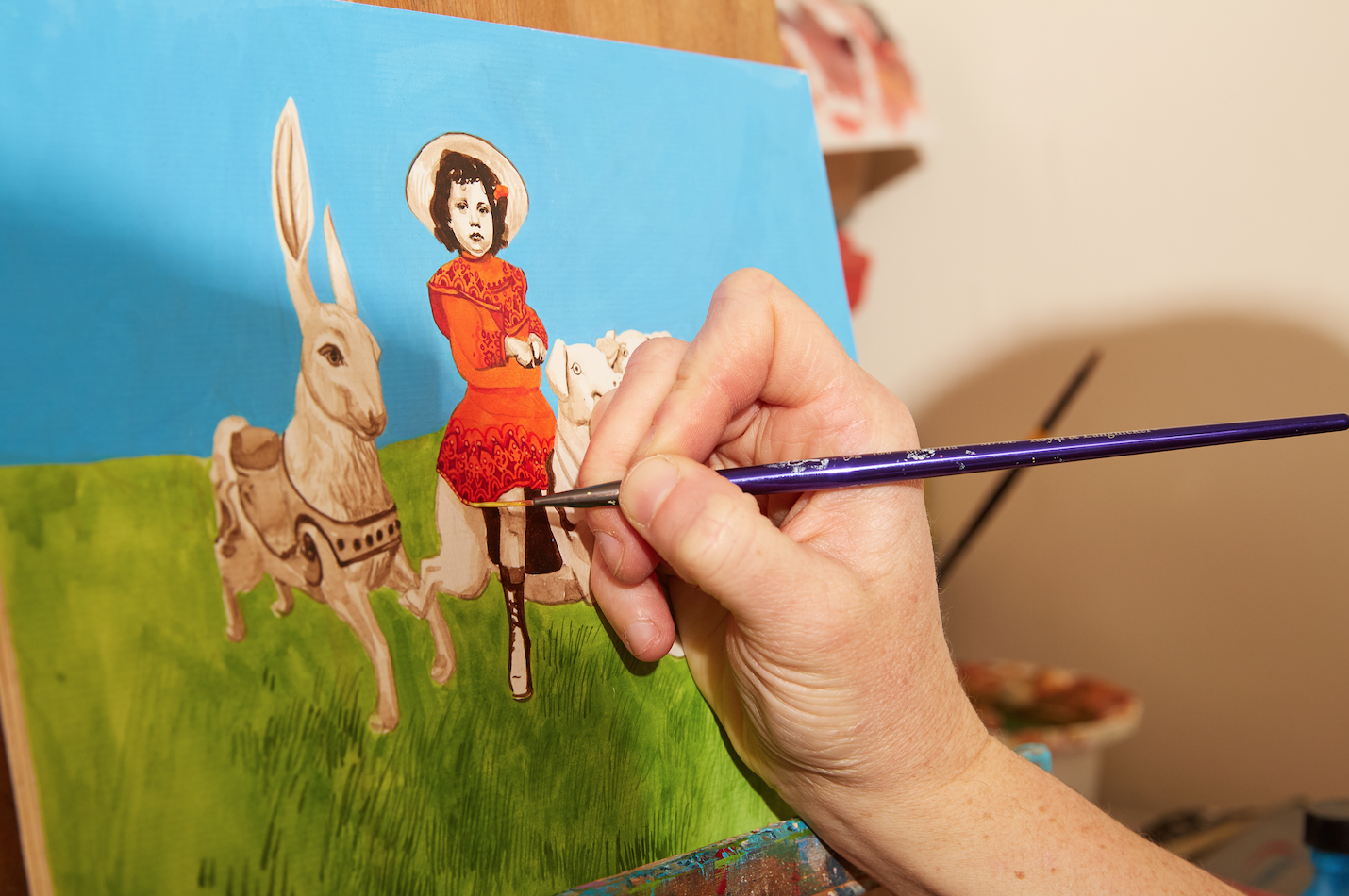
The characters in Kyla Rafert‘s unique and searing brand of painting always seem to stare not back at their audiences, but through them.
Set against intricate, patterned backdrops that blend painting and printmaking, her work often depicts women donning ornate period clothing in large, still rooms. While at first these scenes might appear beautiful and even nostalgic, closer attention inverts these ideas. Often, stark and lifelike animals will populate her canvases, bestowing a quiet surreality, as her paintings work to beautify and befuddle, all in the same deft brush stroke.
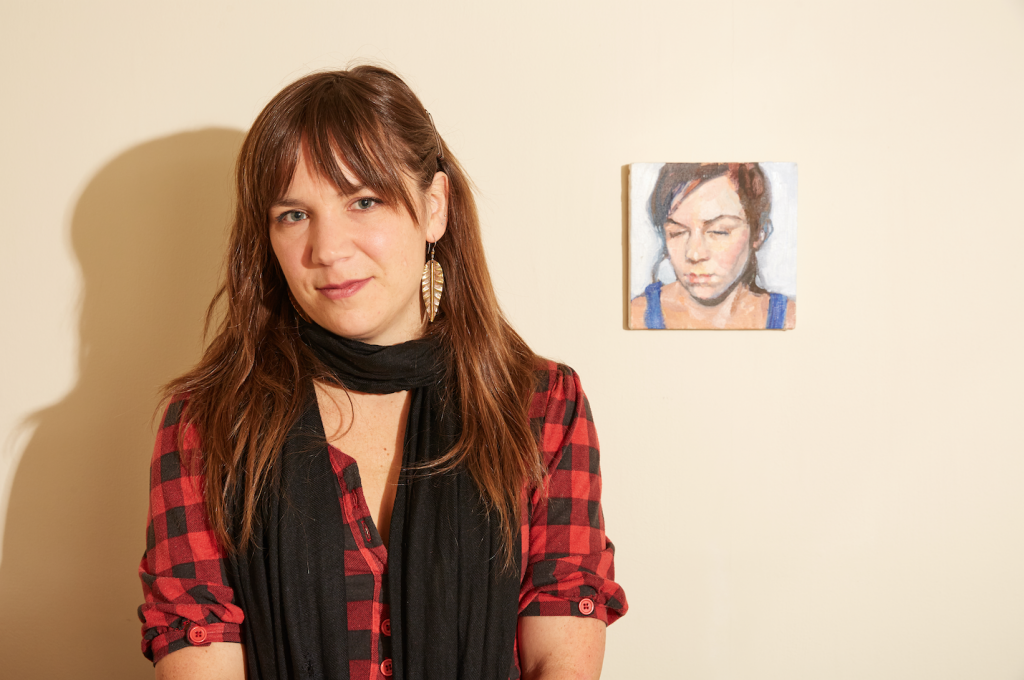
(614) sat down with Rafert, who lives with her family on a homestead south of Columbus in Amanda, Ohio, to talk about her work.
(614): I think what viewers initially notice in your paintings are your ornately-rendered backgrounds. There’s so much detail present in them; can you explain how they’re created?
The patterns on the walls and floors I screen print directly into the painting, so they are literally part printmaking. Their dresses, figures, and objects, as well as patterned rugs, are hand-drawn. I print patterns on the walls and floor last.
When I started this style painting, I was looking into dollhouse wallpaper, and then it occurred to me that with my training, I could custom-mix inks and screen print patterns to match everything.
The patterns all take an incredible amount of time, but it’s meditative for me. I’m actually a very anxious person, and it gives me time where I don’t have to think about anything.
BROUGHT TO YOU BY
There’s a distinct visual effect that these heavily patterned backgrounds create. What does that do for each piece?
The background of my paintings are intended to be realistic in the technical sense, but the spaces I’m creating aren’t.
Sometimes it takes people a moment to realize that even though there’s patterns everywhere, the rooms are almost completely empty. There aren’t windows and doors, and a viewer can see just how barren these rooms are, and just how alone and vulnerable it makes the characters seem.
Going along with that, I think there’s this duality that’s ongoing in your work, especially with the characters, where what a viewer initially sees is sort of turned on its head.
The line that I intend to run through all my work is this sort of love-hate relationship with beauty. Viewers initially see these intricate patterns and beautiful figures, but there’s almost a voodoo-doll thing going on with the characters in my work. They’re these beautiful women—and I specifically want them to seem wealthy—you realize they’re almost trapped in these spaces; it’s the whole sticking the needle in the doll thing.
I think it also has to do with the fact that I’m able to make these beautiful things as an artist, but a lot of times there’s this tension between people wanting something that just looks nice and something that’s interesting.
Perspective seems to matter a lot in your work, for a number of reasons. How do you see it factoring into your paintings?
It’s like my characters, they’re always standing on a stage. The views are always a full-frontal perspective, and that makes the spaces appear very orchestrated.
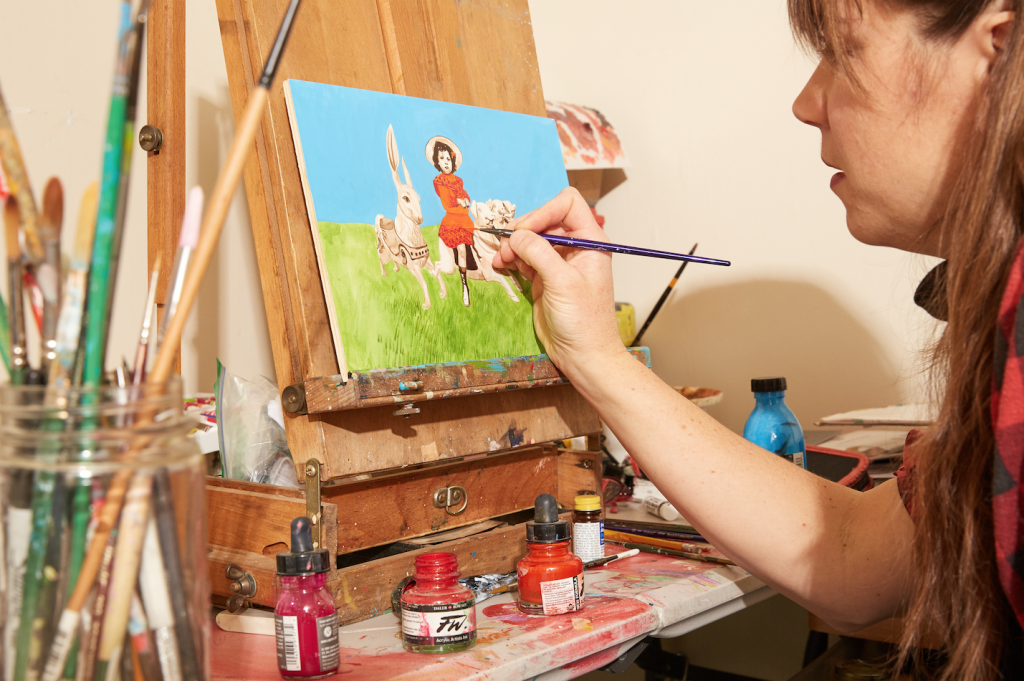
This also means there’s nowhere to hide. The people in my paintings always have these very at poses as well, with their arms at their sides. I think my intention was to create something that looks on paper, at first, very realistic, but just doesn’t make sense as a real physical space.
While your paintings have a definite timelessness to them, the characters often seem plucked out of a specific time period. What’s your inspiration for that?
It’s interesting to me because my sister is a creative writer, my dad is a historian, and my mom is a therapist. The more I think about it, the more I see pieces of all this in my own work.
There’s history, there’s narrative, and psychology in all of these that I can see.
Visit kyla-zoe.com for more information or view of her work on Instagram at kyla.zoe.rafert.
BROUGHT TO YOU BY


